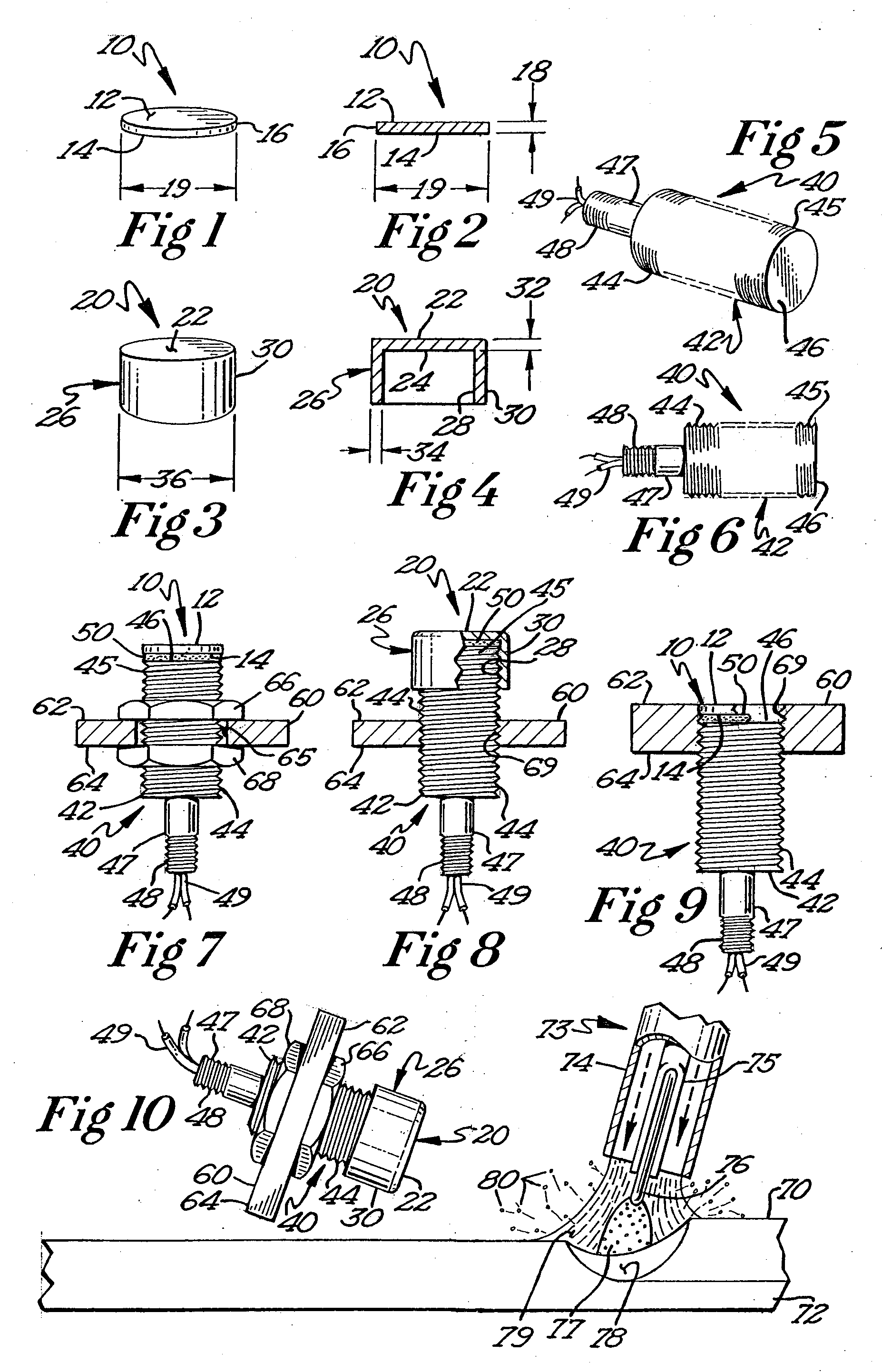Protective cover for a sensor
a technology for protecting covers and sensors, applied in the field of control sensors, can solve the problems of not being able or desirable to provide a sensor housing, sensors also suffer from the same infirmities as the protectively housed sensors, and are subject to damage, etc., and achieve the effect of easy cleaning and/or replacement, and increasing the operational life of the control sensor
- Summary
- Abstract
- Description
- Claims
- Application Information
AI Technical Summary
Benefits of technology
Problems solved by technology
Method used
Image
Examples
Embodiment Construction
[0032]Referring to FIGS. 1 and 2, a preferred embodiment of the protective cover is depicted. The cover 10 includes a first surface 12 a second surface 14 and an edge 16. The cover 10 comprises a layer of material having one or more of the following characteristics: a preferred shore-A durometer hardness in the range of 60-90, a preferred tensile strength of 1320 psi (92.82 kilogram-force per square centimeter (kgf / cm2)) or greater, a preferred dielectric strength of around 300 volts / mil, and a preferred thermal conductivity of 0.3 to 0.5×10−3 cal / sec2, and a temperature stability of about −55 to +200 degrees Celsius. Preferably, the material comprises silicone. More preferably, the material comprises gray-colored silicone that can be molded under thermosetting conditions and later cut to shape. The thickness 18 of the cover, which is defined by the opposing surfaces 12 and 14, is configured so that it does not interfere with the operation of the sensor and yet offers protection fro...
PUM
| Property | Measurement | Unit |
|---|---|---|
| thickness | aaaaa | aaaaa |
| thickness | aaaaa | aaaaa |
| thickness | aaaaa | aaaaa |
Abstract
Description
Claims
Application Information
 Login to View More
Login to View More - R&D
- Intellectual Property
- Life Sciences
- Materials
- Tech Scout
- Unparalleled Data Quality
- Higher Quality Content
- 60% Fewer Hallucinations
Browse by: Latest US Patents, China's latest patents, Technical Efficacy Thesaurus, Application Domain, Technology Topic, Popular Technical Reports.
© 2025 PatSnap. All rights reserved.Legal|Privacy policy|Modern Slavery Act Transparency Statement|Sitemap|About US| Contact US: help@patsnap.com


